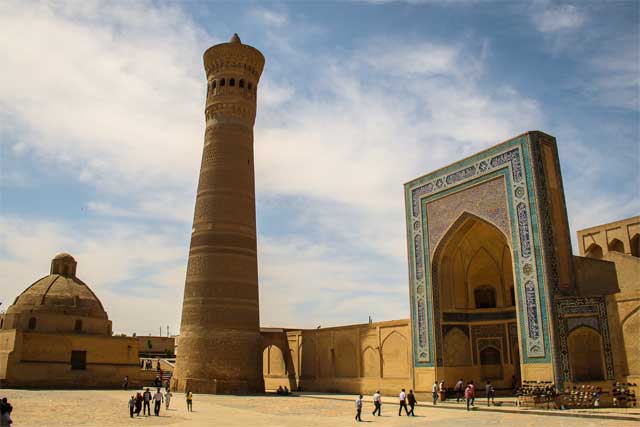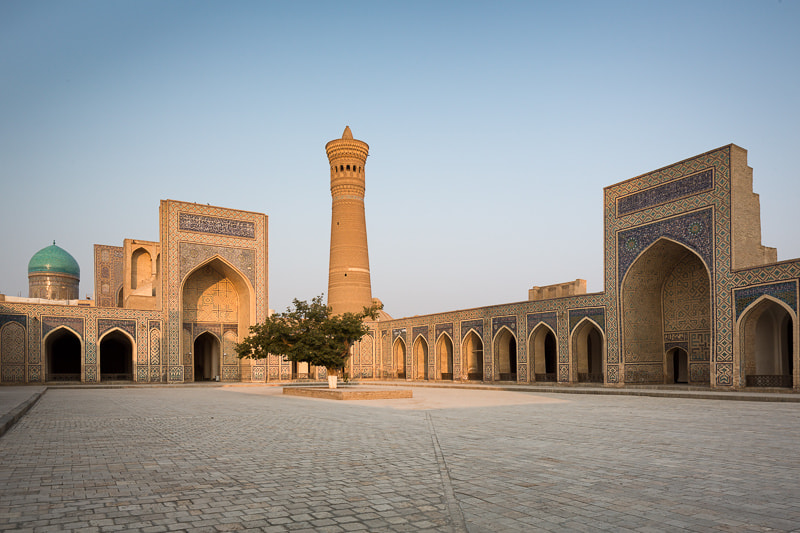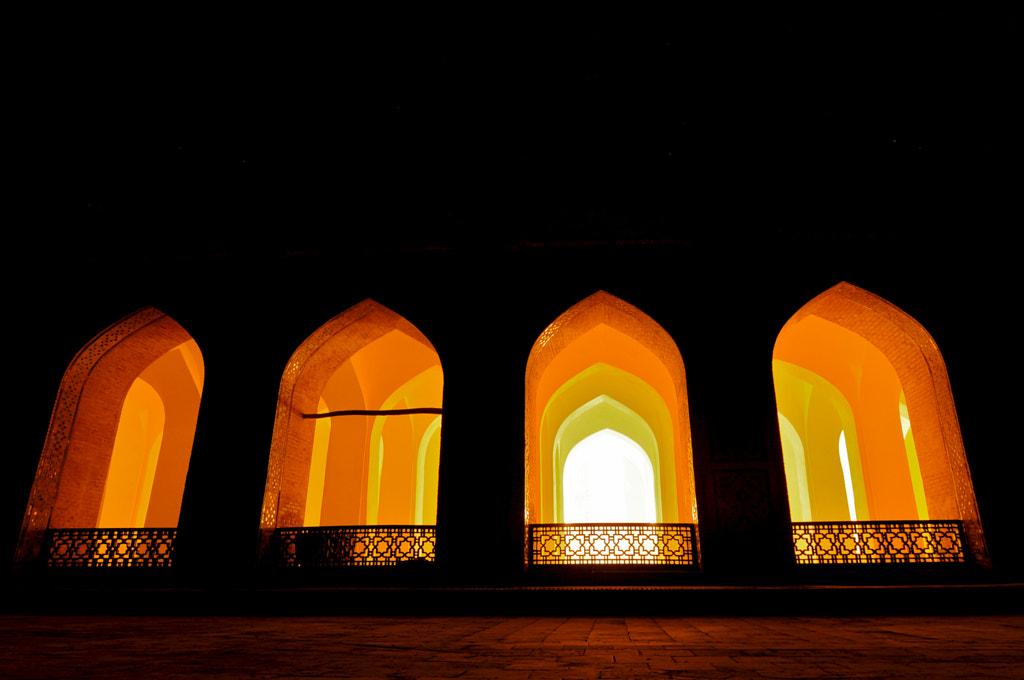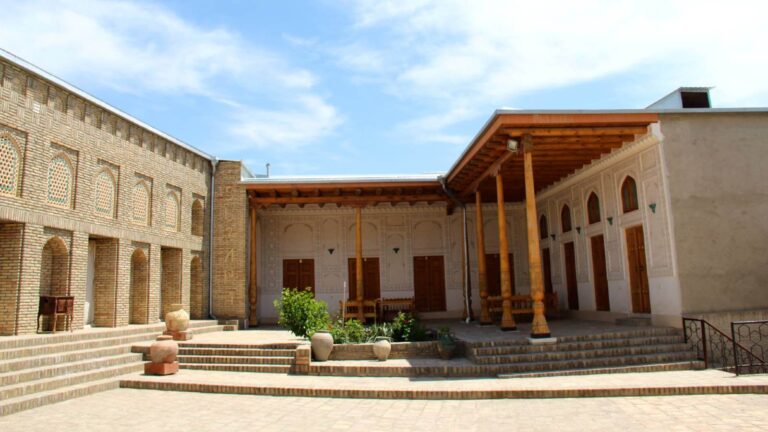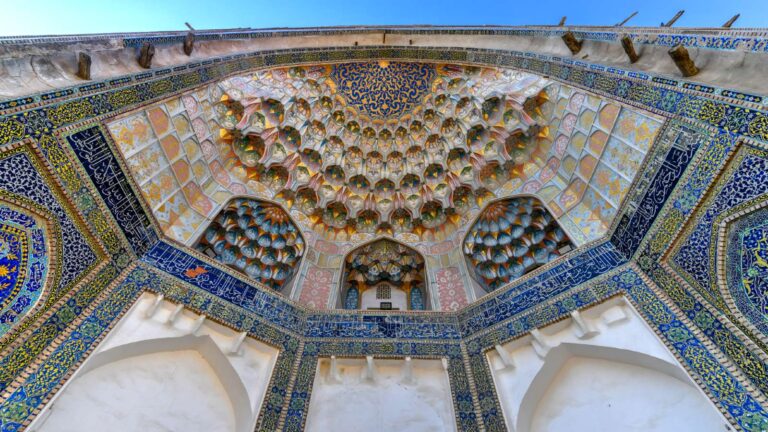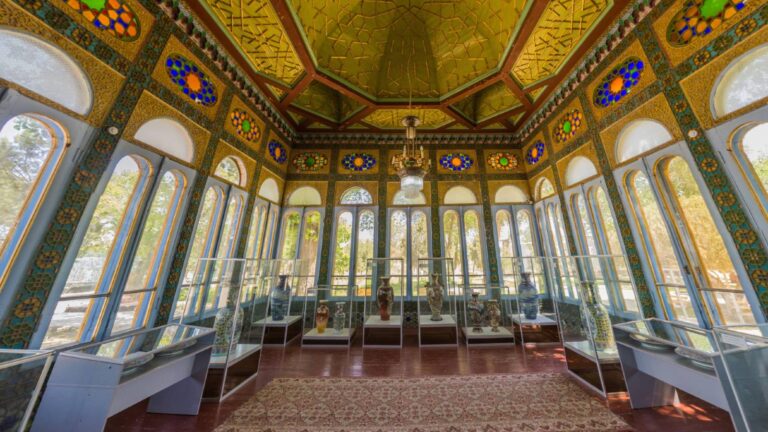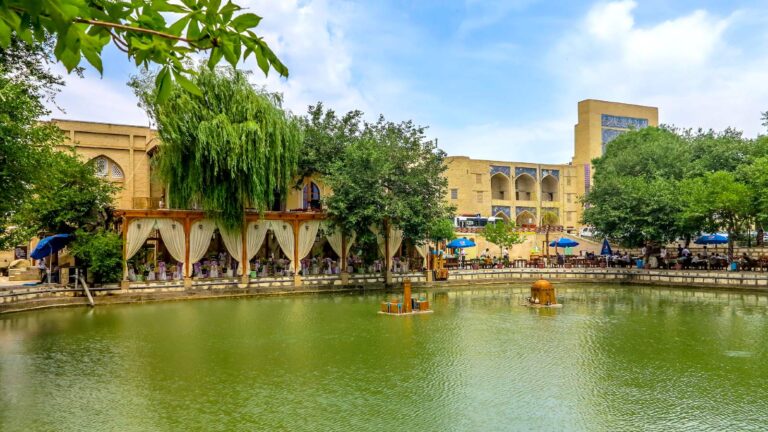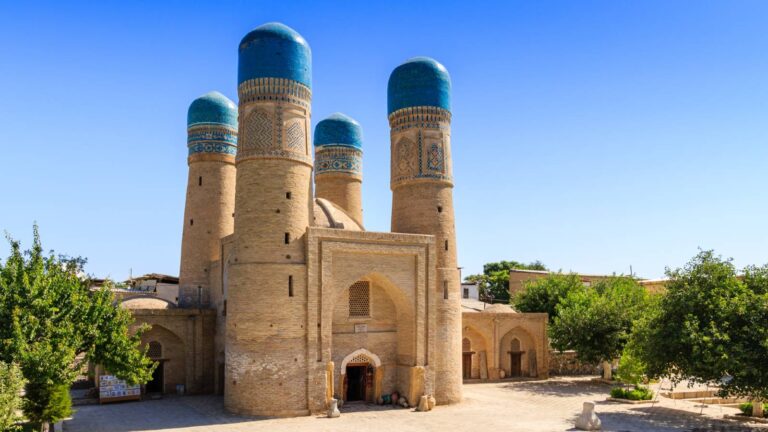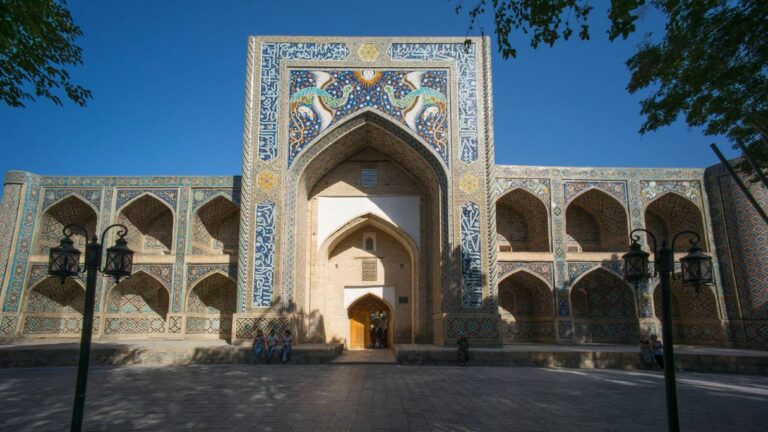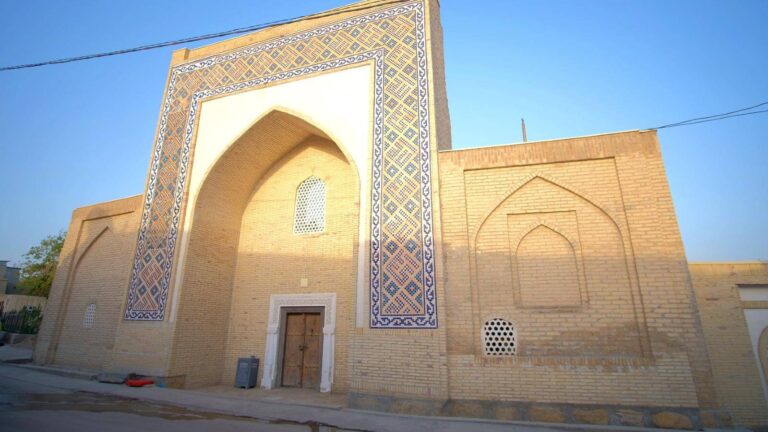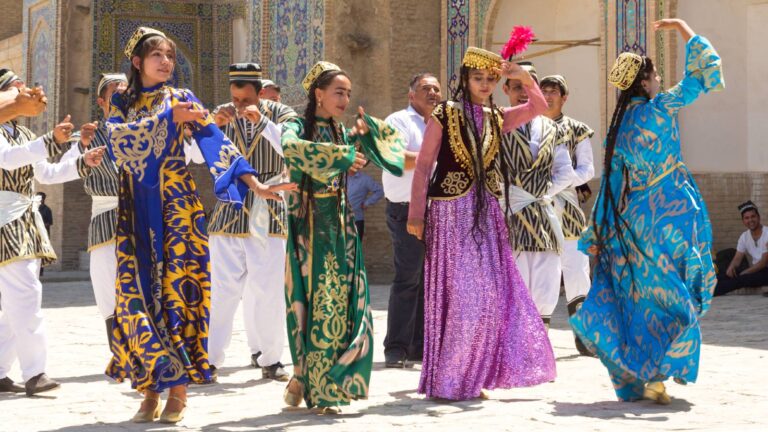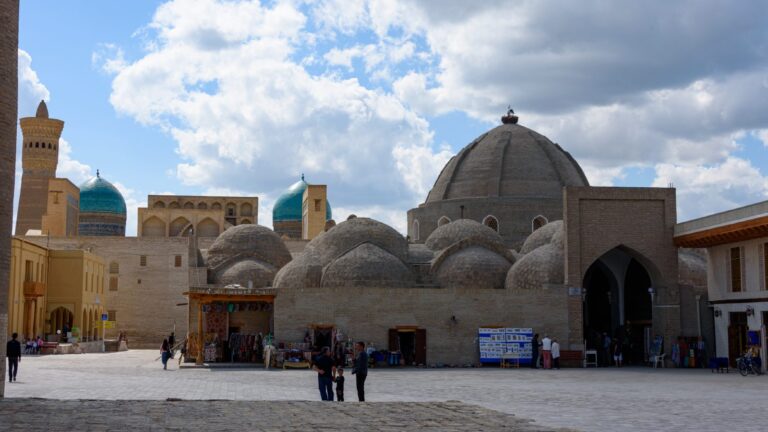Getting There
The mosque is located in the center of the city and is traditionally included in the main tourist routes and excursions of Bukhara. In the city, you can hire a guide and walk with him through the mosque, learning the whole history of the building.
You can get to Kalyan by bus: you need to get off at the Ark stop.
To get to the Kalyan Mosque, you can also use the services of local taxis: for example, in Bukhara, there is a Yoko Taxi.
What to Expect
The first mosque was destroyed, and another building was erected on this site, which has survived to this day-the Kalon Mosque. The mosque and the Kalyan minaret are “connected” by a single narrow bridge, through which you can get from the mosque to the minaret and back. The Kalyan minaret was built according to the then-new method of durable burnt brick. The minaret, tapering to the top, is crowned by a rotunda lantern with 16 windows in the form of arches.
Coming closer to the minaret, you can see that it is decorated throughout its height with 12 belts, on the surface of which you can see unique patterns made of the same brick. On one of the belts, historians found inscriptions, the decoding of which gave information about the date of construction of the minaret-1127, the master-usto Bako, and the donor (according to the current investor) – Arslan Khan-the ruler of Bukhara.
History
The Kalyan minaret was intended to call Muslims to prayer. Muezzins climbed the 105-step internal spiral staircase to the top of the minaret at a height of 45.6 meters every day to summon the faithful for the time of prayer.
But the Kalyan minaret also served as a place of public execution for criminals sentenced to death during the Bukhara Khanate (from 1785 to 1920). Since then, the minaret has been popularly called the Tower of Death. The condemned were thrown from the top directly to the square in front of the minaret.
But they say that the Kalyan Minaret served as a public place of execution not only for criminals, but also for unfaithful wives. One of the legends says that this stopped when one of the convicts put on about 40 dresses, and after hitting the ground she remained alive.
Facilities Available
Nearby – Omar Khayyam Hotel (0.13 km), Zargaron Hotel(0.12 km), Golden Minaret Hotel (0.02 km), Kalyan Minaret Hotel (0.11 km), Old Bukhara (0.16 km). As well as restaurants: Café Wishbone Bukhara (0.16 km), Silk Road Tea House (0.15 km), Minor Cafe House (0.05 km), Chasmai-Mirob Restaurant (0.06 km).


